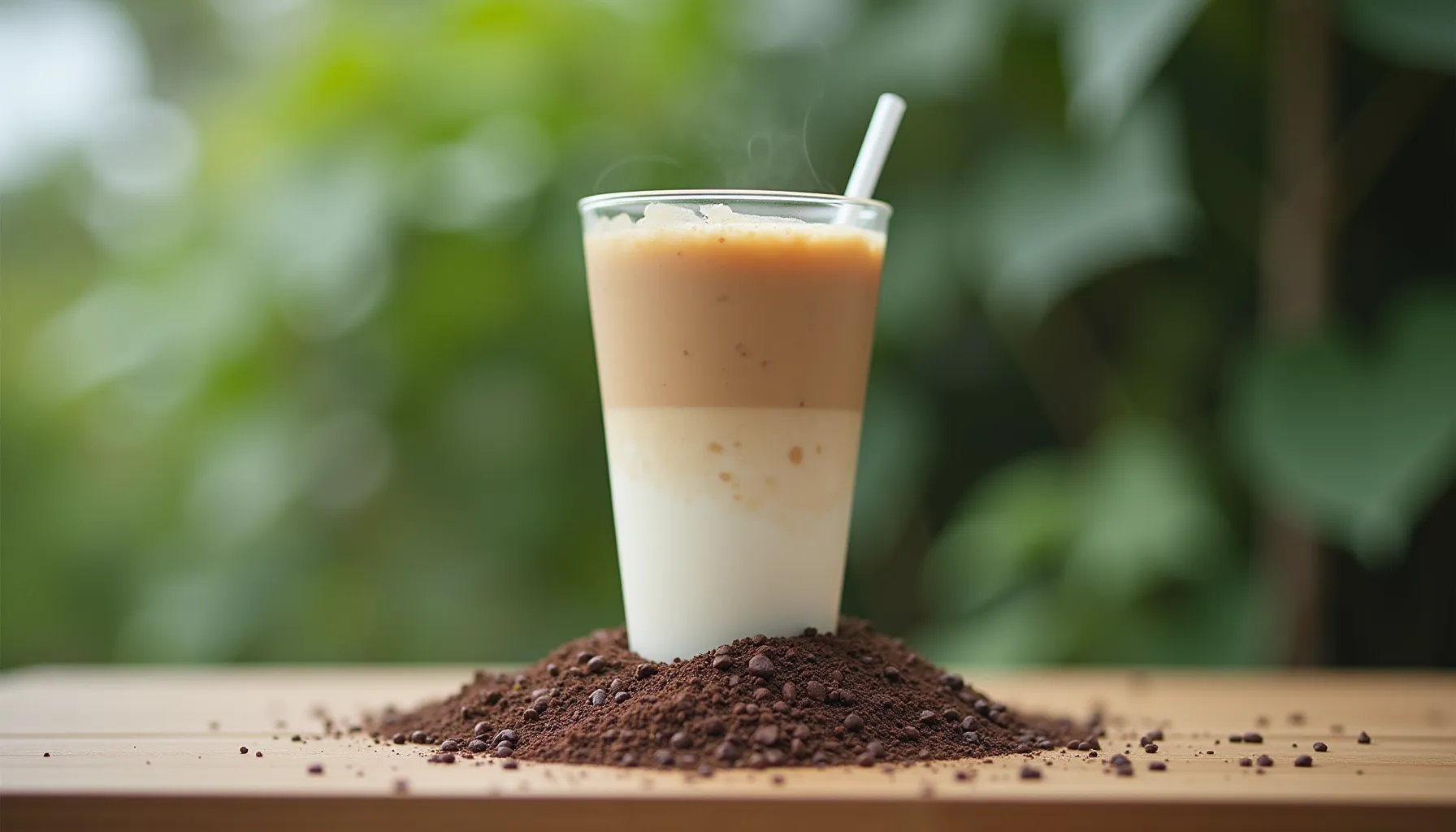If you’ve ever wondered, how does coffee get to the United States, you’re not alone. For many of us, coffee is more than just a beverage; it's a daily ritual that fuels our lives. But have you stopped to consider the intricate journey that each bean takes before it ends up in your cup? Understanding this journey not only enriches your coffee experience but also connects you with the farmers and communities that make it possible.
In this article, we’ll explore the entire process—from the lush coffee farms in countries like Brazil and Colombia, through the meticulous processing methods that prepare beans for export, all the way to the bustling coffee markets in the U.S. You’ll learn about the logistical challenges faced during transportation, the vital role of quality control, and how consumer demands are shifting toward more sustainable practices. By the end, you'll not only appreciate your coffee more but also have a clearer picture of its journey.
Key Takeaways
- **Coffee Cultivation: The Start of the Journey**
- **Processing Coffee for International Export**
- **Transporting Coffee: Challenges and Logistics**
- **The U.S. Coffee Market: Trends and Consumer Behavior**
- **Cultural Impact: Coffee’s Role in American Society**

Coffee Cultivation: The Start of the Journey
Major Coffee-Producing Countries
When we think of coffee, our minds often drift to those idyllic plantations dotted across the globe. **Brazil** stands as the titan of coffee production, responsible for about 37% of the world’s supply. Close behind is **Colombia**, famous for its rich Arabica beans that are cherished for their smooth flavor profile. Other noteworthy producers include **Vietnam** and **Ethiopia**, both contributing unique beans that cater to varied palates.
The geographical diversity of these regions shapes the intricacies of each coffee bean. From the high-altitude farms in Colombia to the lowland plantations in Brazil, the subtle differences in climate and soil type result in a range of flavors and aromas. This rich tapestry of growing regions offers coffee aficionados endless choices while illustrating the importance of knowing where your coffee comes from.
The Coffee Plant Lifecycle
The journey of coffee truly begins with the lifecycle of the coffee plant itself, which can take three to five years from planting to first harvest. The **Coffea** plant thrives in specific conditions—warm temperatures, ample rainfall, and well-drained soil are essential. Each cherry needs careful nurturing as it develops, and during the harvest season, skilled pickers hand-select only the ripest cherries.
This meticulous cultivation process doesn’t just produce coffee; it fosters relationships within communities, as local farmers often rely on these crops for their livelihood. By understanding the coffee plant lifecycle, we grasp the dedication that goes into growing the beans we sip daily, making our java experience all the more enriching.
Processing Coffee for International Export
From Cherry to Bean: The Processing Methods
After those vibrant cherries are harvested, they embark on another transformative journey through processing. Two primary methods dominate the scene: the **dry method**, where cherries are sun-dried, and the **wet method**, which involves fermenting and washing the beans before drying them. Each technique introduces unique flavors that resonate with different coffee drinkers.
For instance, the dry method tends to impart a fruity flavor, while the wet process often produces cleaner and more vibrant cup profiles. As you sip your morning brew, consider how these methods shape what you taste. The processing phase is not merely technical; it’s an art form that reflects the culture and traditions of the region, intertwining the story of each cup brewed.
Quality Control Prior to Export
Before any coffee beans leave their home country, they undergo rigorous quality checks that are essential for international markets. Many farmers belong to cooperatives that ensure high quality and ethical practices. Certifications like **Fair Trade** and **Organic** validate their commitment to sustainability and ethical sourcing.
These quality assurance processes are crucial, as they assure consumers of the integrity of what they’re buying. Importers take these certifications seriously, and they often consider them when making purchasing decisions. By understanding the quality control process, consumers become more empowered to choose brands that align with their values and support sustainable practices.
Transporting Coffee: Challenges and Logistics
Shipping Methods and Routes
The moment coffee beans are prepared for their journey, a new set of challenges arises. Most beans make their way to the U.S. via ships, which handle the bulk of the coffee trade efficiently. This maritime route is often preferred for its cost-effectiveness; however, it's not without hurdles.
Factors such as weather conditions, delays at ports, and customs regulations can all impact the transport timeline. Importers must deftly navigate these obstacles to ensure the quality of coffee remains intact from its source to shelves in coffee shops and grocery stores. Understanding these logistics allows us to appreciate the complexity behind our favorite cups of coffee.
Customs and Regulations in the Import Process
Once coffee beans arrive at U.S. ports, they must clear several regulatory hurdles to ensure safe consumption. The **U.S. Customs and Border Protection (CBP)** oversees the importation process, checking that all shipments comply with health and safety standards set by the **FDA** and **USDA**.
These regulations encompass everything from proper packaging to pest control measures, ensuring that only the best beans find their way into our mugs. For consumers, being aware of these processes not only fosters trust in the products they purchase but also enhances appreciation for the international journey each bean has undertaken.
The U.S. Coffee Market: Trends and Consumer Behavior
Coffee Consumption Statistics
The U.S. is a coffee-loving nation, with staggering statistics to prove it. Recent estimates indicate that Americans consumed approximately **164.2 billion** six-ounce cups of coffee from October 2022 to September 2023. This translates to more than one cup per person, per day!
What’s even more fascinating is how the U.S. market accounts for nearly **55%** of coffee consumption in Europe. With evolving consumer preferences, the shift towards specialty coffee and premium blends has reshaped what we pour into our mugs. As more people explore their options, we see a corresponding rise in interest surrounding artisanal brewing methods and direct trade practices, reflecting a deeper awareness of coffee's origins.
The Move Toward Sustainability
With consumers becoming increasingly conscientious, there's a burgeoning demand for sustainable coffee sourcing. This shift goes beyond just taste; it encompasses ethical practices that support the environment and the communities that cultivate coffee. Many coffee drinkers today seek certifications like **Fair Trade** and **Rainforest Alliance**, indicating a preference for brands that prioritize sustainability.
Roasters and retailers are responding, adapting their offerings to align with this mindful consumption trend. By choosing sustainable coffee, consumers are not only enhancing their coffee experiences but also playing a part in fostering a more equitable coffee industry. This collective action paves the way for a brighter, more sustainable future for the coffee world we cherish.
Cultural Impact: Coffee’s Role in American Society
Coffeehouse Culture and Social Connections
Coffee isn’t just a beverage; it’s a social ritual deeply woven into the fabric of American culture. Picture bustling coffeehouses, a haven for workers and students alike, where connections are made over steaming cups. These spaces have evolved from mere coffee shops to cultural hubs where ideas are shared, friendships are formed, and communities come together.
Historically, coffeehouses have played significant roles in shaping societal discussions—think of them as modern-day salons. They foster creativity and collaboration, providing an environment where people feel comfortable discussing everything from art to politics. As you walk into your local café, it’s evident that coffee culture thrives on relationships and conversations, making each cup a collective experience rich in connection.
The Future of Coffee in America
As we glance at the horizon, the future of coffee in America looks promising yet challenging. With climate change posing risks to coffee production, the industry must adapt to ensure sustainability. Consumers will continue to push for transparency and traceability in the coffee supply chain, demanding to know not just what they drink but how it impacts the world.
Moreover, trends like home brewing and specialty coffee exploration are on the rise, encouraging individuals to engage with their coffee on a personal level. Understanding how to brew the perfect cup at home can transform a daily ritual into an enriching experience. By embracing sustainable practices and nurturing relationships with coffee growers, we can all contribute to a community that celebrates quality and ethical consumption.

Brewing Insights: The Journey of Coffee
The intricate journey of coffee from farm to cup is indeed a story worth savoring. We’ve explored how coffee is cultivated across diverse regions, the meticulous processing methods that bring it to our tables, and the complexities of logistics that ensure every bean arrives fresh. Along the way, we've recognized the growing consumer emphasis on sustainability, urging us to consider the ethical implications of our coffee choices.
As you take your next sip, remember the rich tapestry of labor and love behind that moment. Embrace the coffee culture by supporting sustainable practices and local businesses. By making conscientious choices, we not only enhance our coffee experiences but also contribute to a more equitable industry for all involved—from farmers to roasters to retailers.
Take this awareness into your daily routine, and share your newfound knowledge with friends and family. Together, let's champion a coffee culture that values quality, community, and sustainability. Every cup has a story, and by engaging with this journey, we enrich our connections to the world of coffee.
FAQ
1. What are the main coffee-producing countries that export to the U.S.?
The top coffee-producing countries exporting to the U.S. are Brazil, Colombia, Vietnam, and Ethiopia, each contributing distinct flavors shaped by their unique growing conditions.
2. How does the coffee processing method affect flavor?
Coffee flavor can vary significantly based on the processing method. The dry method typically yields fruitier flavors, while the wet method often results in a cleaner, brighter taste in your brew.
3. What challenges do coffee importers face?
Importers navigate several challenges, including weather-related delays, customs regulations, and ensuring that quality standards align with consumer expectations.
4. Why is sustainability important in the coffee industry?
Sustainability is crucial as it promotes ethical farming practices, supports coffee-growing communities, and helps mitigate environmental impacts, allowing consumers to make responsible choices.
5. How can I support ethical coffee sourcing?
To support ethical sourcing, look for certifications like Fair Trade or Organic on coffee packaging. Additionally, choose local roasters that prioritize sustainability and build relationships with coffee growers.












